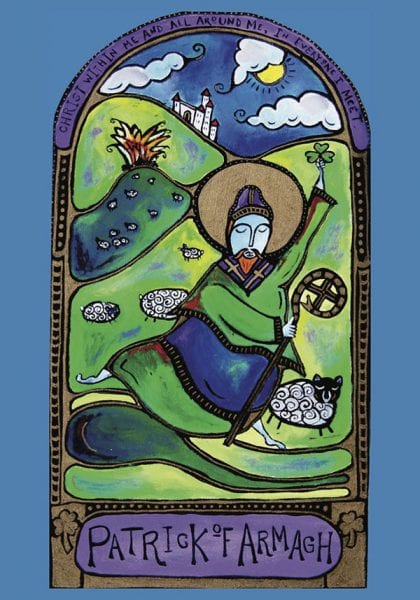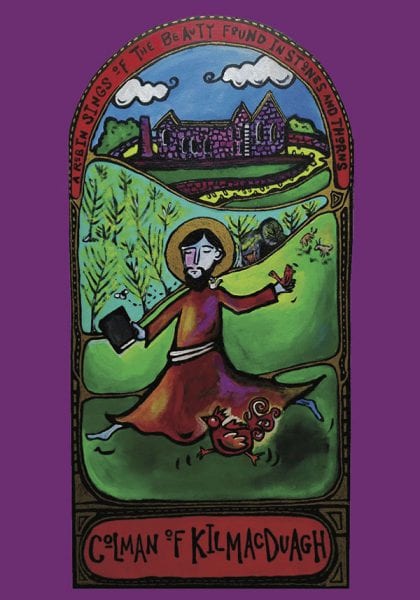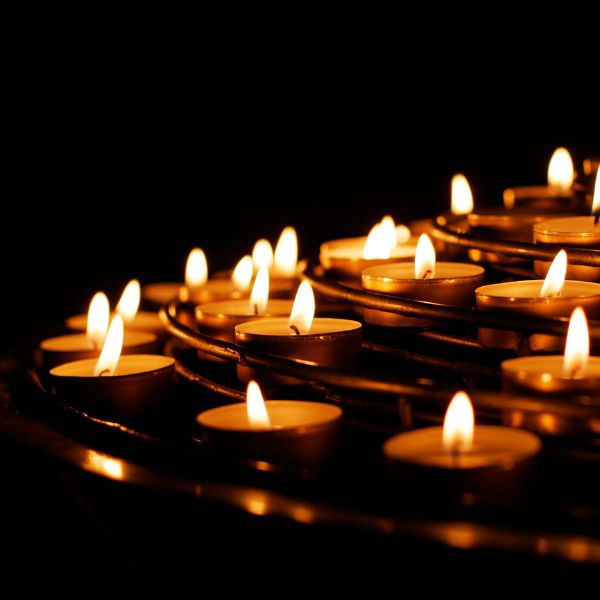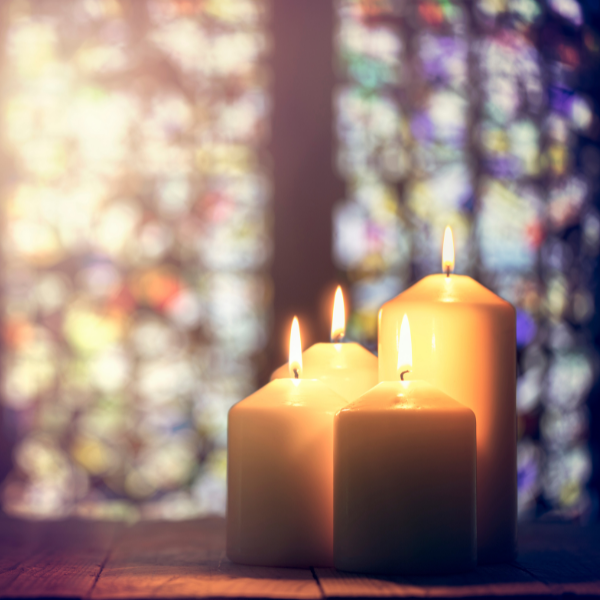I am delighted to share another beautiful submission to the Monk in the World guest post series from the community. Read on for Rich Lewis’ reflection on centering prayer.
On workdays my first centering prayer sit is at 5:45 a.m. I always feel some anxiety after I wake. Then I retreat to the basement, light a candle, and sit on a couch. It wakes me up. The anxiety fades. It fills me with interior peace and energizes me for the day.
I use the Contemplative Outreach phone app. The timer is set for twenty minutes. I read the opening prayer. I have selected, “Open my heart to your Love.” That is all I want to do. I want to forget me and open my heart to God’s Love. I fill my heart with God’s Love.
During centering prayer God heals my mental, physical and spiritual being. I immediately detach from my thoughts and emotions. In my mind I silently say, “I let them go to You.” I think about my upcoming day. I think about what worries me and makes me anxious. I think about areas where I need mental and physical healing. I think about others who I am worried about. I think about my anger, frustration, hurt. As the thoughts arise, I let them all go to God.
I might go through my “let go” process for about one minute. Then I am done. If I have more thoughts after that, I mentally visualize my sacred icon as my intention to open to God’s presence and action within. I internally visualize the icon for no more than one second. My goal now is to forget me. My goal now is to let go. My goal is to sit in the presence of Mystery – to remove all barriers to God. My goal is to let God gaze directly on me. The only way God can do this is if I let go of me and my baggage.
Anthony de Mello writes, “Words cannot give you reality. They only point, they only indicate. You use them as pointers to get to reality. But once you get there, your concepts are useless. A Hindu priest once had a dispute with a philosopher who claimed that the final barrier to God was the word ‘God,’ the concept of God.”
Words can get me started but I must let go of them if I want to find God, or more precisely let God find me. I am in a posture of openness and consent to the action of God. As soon as I have any thoughts, I let them go. I enter the spaces between my thoughts. Here God finds me.
God is not my thoughts. God is beyond my thoughts. My thoughts only limit God. Many mystics have exclaimed in one form or another that the most profound knowledge of God is to know God as unknowable. I enter centering prayer with this posture of openness and unknowing. Whenever thoughts, emotions and day planning begin, if I have to, I mentally visualize my Jesus icon to bring me back. Sometimes I do not have to visualize the icon. My thoughts float away on their own.
After twenty minutes, the three consecutive tones of the closing bell ring. When the third and final bell has rung and there is silence, my sit is over. I know I did not fall asleep. I describe it as a place I go. I have let go. I do not feel anything. It is a vacuum. I have merged or fallen into something larger than me. When the closing bell rings I re-emerge from this place that I will call Divine Union. I now feel joy and peace. I am grounded and excited to begin my day.
Letting go during centering prayer is meant to continue the rest of your day. What do I mean by this? I mean we should never hold on to thoughts and emotions that are not productive. They stop us from accomplishing the tasks that we need to complete each day. When I become worried, I let it go. When I become anxious, I let it go. When I become frustrated, I let it go. When I become afraid, I let it go. It is okay to acknowledge emotions but they will often stop us dead in our tracks. We need to let them go so we can move on. I realize that at times there are thoughts and emotions that we need to deal with. I do not suggest repression. I suggest that we let them go so we can move on with our day. Later in the day if we need to deal with them, we should.
When it comes to thoughts there are two extremes. We can clutch the thought like clutching a rock (attachment) or we can hurl the rock (aversion). Centering prayer is about simply letting the rock rest in the palm of our hands, then gently tilting our hand so it drops. It is a gentle movement void of tense reactivity.
Gently letting go is a reflex. The more we do it the stronger the reflex becomes. At first we will hold on to an emotional tangent for a day or more. Then with practice, the tangent only takes half the day. Then, in time, as we become more skilled at the art of letting go we can let go of the tangent after ten minutes.
 Rich Lewis teaches centering prayer in his local/virtual community at both church and college/university settings and also offers one on one coaching. Rich publishes a weekly meditation and book reviews on his site, Silence Teaches. Learn more about Rich at www.SilenceTeaches.com.
Rich Lewis teaches centering prayer in his local/virtual community at both church and college/university settings and also offers one on one coaching. Rich publishes a weekly meditation and book reviews on his site, Silence Teaches. Learn more about Rich at www.SilenceTeaches.com.





